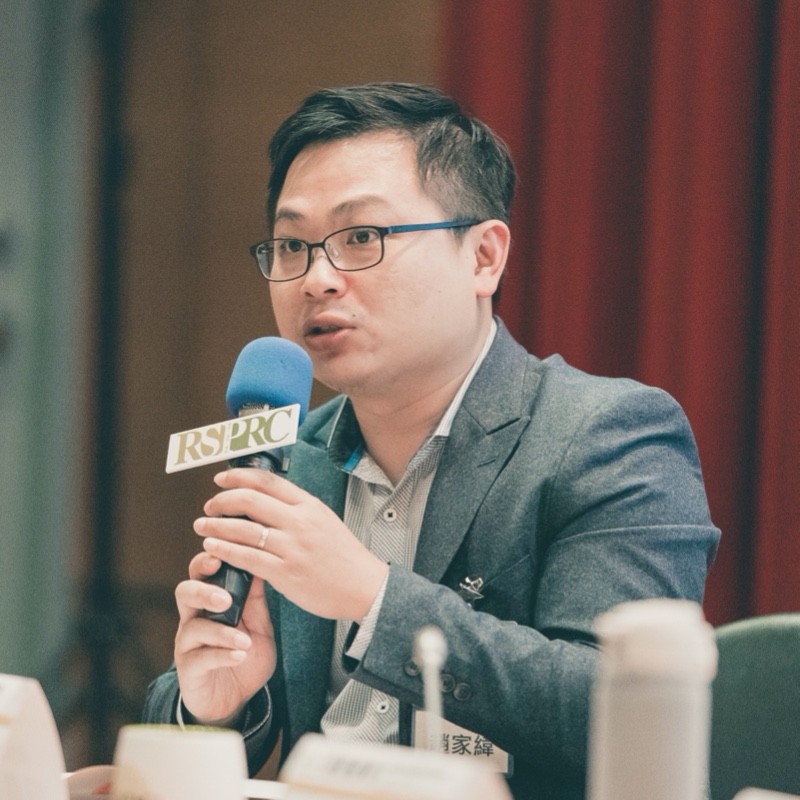Organized by the Global Taiwan Institute
Event Summary:
On September 25, 2025, the Global Taiwan Institute (GTI) hosted a seminar entitled “Taiwan’s Energy Resilience: Security, Innovation, and Policy.” The discussion featured four speakers: Chia-Wei Chao, Research Director at the Taiwan Climate Action Network (台灣氣候行動網絡); Kayla Orta, Non-resident Fellow at the Indo-Pacific Initiative at the Atlantic Council; Joseph Webster, a Senior Fellow at the Atlantic Council’s Global Energy Center; and Chia-Shen Tsai, Non-Resident Fellow at Taiwan’s Research Institute for Democracy, Society, and Emerging Technology (DSET). GTI Programs Coordinator Ben Levine moderated the event.
Chia-Wei Chao outlined how Taiwan’s energy transition has entered a “2.0” phase that is increasingly driven by security and resilience. He stressed that Taiwan remains heavily dependent on energy imports and can sustain its supply for only about two weeks in a crisis, with semiconductors alone consuming over half of the nation’s electricity. While renewable energy capacity has tripled since 2016, overall import dependence has only dropped from 98% to 96%, and current government targets for 2035 still fall short of Taiwan’s legally binding climate goals. He explained that resilience must be understood across three pillars: supply resilience (expanding renewables and reducing imports), grid resilience (strengthening infrastructure and micro-grids, which are often upgraded only after disasters), and mental or societal resilience (countering disinformation and building public support for renewables). He warned that disinformation has eroded confidence in solar and wind, with nuclear now polling higher in public support. He argued that energy resilience should be framed as a national security issue to mobilize public backing. Taiwan’s draft 2035 climate plan mentions resilience but does not fully integrate social or national security dimensions, revealing a gap between climate and security communities. Bridging this divide, he concluded, is essential for Taiwan to build a comprehensive, long-term energy resilience strategy. Having a large share of renewable energy increases energy resilience, and raising public awareness of these solutions builds support for these initiatives.
Kayla Orta articulated that Taiwan and South Korea face similar energy challenges as industrialized, import-dependent economies shaped by security pressures, with nuclear energy at the center of political and societal debates. Taiwan has shut down its last nuclear reactor, though decommissioning remains unresolved and proposals for restarts continue to divide public opinion. Its energy resilience will depend on exploring new technologies, such as small modular reactors, and developing long-term waste management strategies. South Korea, by contrast, continues to expand nuclear projects under the Yoon administration, while also beginning its first decommissioning process and advancing legislation on waste storage. Both countries are turning to short-term dry-cask storage, with Taiwan and South Korea partnering with NAC International, creating opportunities for technological exchange. Cooperation could emerge in areas such as decommissioning expertise, waste storage solutions, and advanced nuclear research. Ultimately, nuclear energy in both nations remains deeply tied to domestic politics and public trust, shaping the trajectory of future cooperation and innovation.
Joseph Webster explains that Northern Taiwan suffers from a limited power generation capacity and weak solar potential, mainly due to weather conditions and urban density. At the same time, its vulnerable north–south transmission lines pose both reliability and security risks. With the semiconductor industry consuming 15% of Taiwan’s electricity, any disruption—whether through conflict, blockade, or sabotage—would have severe global supply chain consequences. Although Taiwan’s electricity remains relatively inexpensive at 13 cents per kilowatt-hour, its 96% reliance on imports makes it highly vulnerable, and raising rates to curb demand risks a political backlash. Fiscal rules leave space for increased investment, with about $120 million available to bolster energy security. Given China’s own energy struggles and Taiwan’s dependence, policymakers are urged to adopt an “all of the above” strategy, tapping every viable generation source. Particular attention should be given to Northern Taiwan, where half the population and critical infrastructure are located, by boosting efficiency and considering the potential for nuclear restarts. This approach would reduce vulnerability, diversify supply, and strengthen resilience in the face of future crises..
Chia-Shen Tsai frames Taiwan’s energy policy as not just about power generation, but also about survival in the face of climate change, geopolitical risks, and technological disruption. The policy must strike a balance between reliability, affordability, and sustainability, while also building resilience against crises such as typhoons, cyberattacks, or potential blockades. Strengthening supply chains, hardening infrastructure, and ensuring the island can sustain itself for two months without outside help are seen as critical goals. Taiwan’s booming role as a hub for global tech firms has increased electricity demand, particularly in clustered data centers that strain the northern grid and require cleaner energy sources. With renewables accounting for only 11% of generation, Taiwan is investing in fuel cells and hydrogen, although challenges such as limited land, underdeveloped infrastructure, and dependence on imports remain. At the same time, Taiwan’s innovation in perovskite solar cells and semiconductor-linked clean energy solutions shows its potential to lead through technology rather than scale. Ultimately, deeper integration with democratic clean energy supply chains could boost competitiveness, economic security, and long-term resilience.

